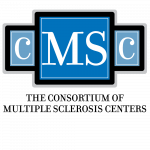Background:
Multiple sclerosis (MS) is a chronic disease, and people living with MS (PLwMS) often experience symptoms across numerous functional domains that ultimately lead to reduced quality of life. Digital tools that objectively assess patient function in between infrequent clinic visits may optimize disease management. Defining the overarching goals for PLwMS and health care professionals (HCPs) and identifying the unmet needs in MS care are critical in the development of digital solutions for PLwMS, and as such were key components of development for Floodlight MS software as a medical device. A Jobs-to-be-Done (JTBD) framework, an outcome-driven innovation strategy based on an in-depth understanding of customer goals, was used during Floodlight MS development to identify and prioritize the unmet needs of PLwMS and HCPs.
Objectives:
To describe how Floodlight MS development incorporated the unmet needs of PLwMS and neurologists, identified using a JTBD framework.
Methods:
The framework began with identifying JTBD in MS care, defined as the underlying processes that PLwMS and HCPs are trying to execute while using a device or service to support MS disease management. Next, nine PLwMS and nine neurologists from the US prioritized the most important unmet needs. Lastly, a second, larger US group of 202 PLwMS and 211 neurologists ranked those needs in terms of importance and satisfaction. These ratings were analyzed to determine if needs were overserved or underserved.
Results:
PLwMS and neurologists defined two complementary overarching JTBD: live life while managing MS for PLwMS and maintain quality of life for PLwMS for neurologists. Identification of 108 (PLwMS) and 139 (neurologists) desired outcome statements uncovered 15 PLwMS and 35 neurologist underserved needs, with the following rated most highly: assessing lifestyle and activities (74%, 72%) and changes in health (74%, 72%); and treatment management (72%, neurologists only). Neurologists needs included monitoring changes in patient status and the impact of MS on daily life. PLwMS’ needs concerned gaining a broader understanding of their health status and better communication with HCPs.
Conclusions:
The JTBD framework allowed for identification and prioritization of unmet needs to support Floodlight MS development. Understanding how patients needs might best be served within the confines of technical and regulatory feasibility may be critical to inform the design of acceptable digital health solutions for PLwMS.
[learn_press_profile]
